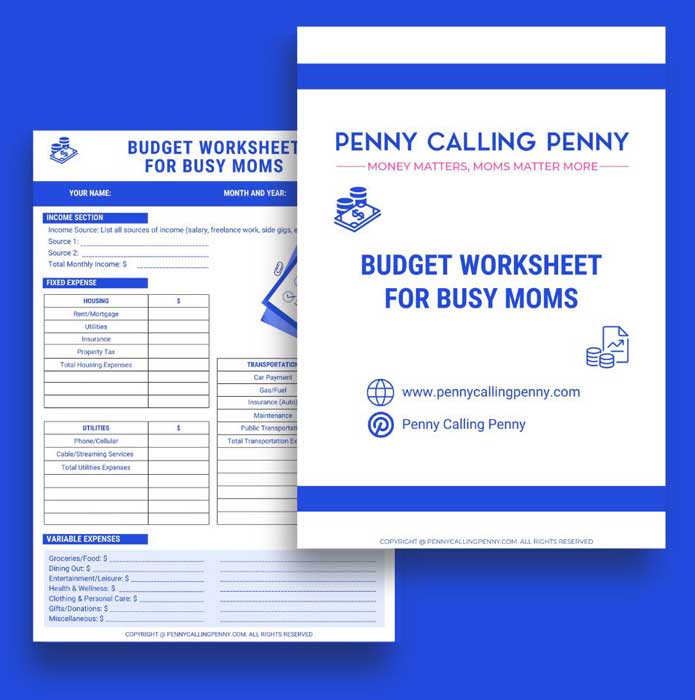There are a variety of state and federal programs that provide grants for single moms in Texas. These grants provide financial assistance to help single mothers pay their bills, access health insurance for their family, or pursue higher education, among other purposes. If you’re a single mother in Texas in need of assistance, these programs could help.
Best Grants For Single Moms In Texas
Whether you’re looking for help buying food for your family, finding affordable childcare or healthcare coverage, or covering the costs of your college degree, these programs offering grants in Texas could offer assistance.
Texas Temporary Assistance For Needy Families (TANF)
The TANF program provides financial assistance that single mothers can use toward food, clothes, housing, utilities, and other necessities. This program is available for low-income families with children aged 18 or younger.
Along with meeting the program’s income requirements, you must also agree to look for or train for a job, take parenting skills classes, follow child support rules, and fulfill other TANF eligibility requirements.
In addition to regular monthly assistance, this program offers a one-time TANF for families in crisis. You can use this grant to pay for food, clothing, housing, transportation and other essentials, but you can only get a one-time TANF once per year.
Single mothers who think they might qualify can apply for benefits on the Your Texas Benefits website.
Helpline No. – Toll-free at 877-541-7905

Source: Singlemotherguide.com
Texas Supplemental Nutrition Assistance Program (SNAP)
The SNAP program offers grants for moms in Texas that they can put toward food or garden seeds. Note that you can’t use SNAP benefits to pay for tobacco, alcohol, or non-edible items.
To be eligible, you’ll need to make less than the maximum income limit for your family size and meet other program rules. If you qualify, you’ll receive a Lone Star Card from your local Health and Human Services Commission (HHSC) benefit office or in the mail. You can shop with this Lone Star Card like any other debit card.
Helpline No. – Toll-free at 877-541-7905
Texas Special Program For Women, Infants, and Children (WIC)
The Texas WIC program is designed to provide healthy food, nutrition classes, and other resources for families with children aged five and under. Pregnant women can also receive WIC food benefits until the end of their pregnancy or longer if they choose to breastfeed their baby.
If you meet the eligibility requirements for this program, you’ll get benefits such as personalized nutrition and breastfeeding counseling, recipes and cooking demonstrations, counseling with nutritionists, peer support groups, and healthy food.
You can apply for WIC benefits online. Once you submit your application, a team member will reach out to you to set up an appointment at your local office.
Call 800-942-3678 to learn more about Texas WIC.
Texas Medicaid
The Texas Department of Health and Human Services also administers Medicaid benefits for low-income families. If you qualify, you’ll choose a health plan that provides benefits that support your particular circumstances. Some Medicaid plans specifically designed for women include Medicaid for Pregnant Women and Medicaid for Breast and Cervical Cancer. As with some other Texas programs, you can apply for benefits on the Your Texas Benefits website.
Helpline No. – Toll-free at 877-541-7905
Texas Children’s Health Insurance Program (CHIP)
If you earn too much money to qualify for Medicaid but can’t afford private health insurance, you might be able to get your children on the Children’s Health Insurance Program (CHIP). The CHIP program provides low-cost health insurance coverage for children from birth through the age of 18. The CHIP program is available in more than 20 counties in Texas.
Helpline No. – CHIP: 832-828-1002 (local), 1-866-959-6555, TTY 800-735-2989 (Texas Relay) or 7-1-1
Texas Child Care Services Program
The Texas child care services program subsidizes child care for low-income families. Along with offering financial aid for child care services, this program also educates parents on quality child care, early learning, and other support programs. If you qualify, you will be referred to programs that are certified within the Texas Rising Star program.
Call TWC at 800-628-5115.

Download our free printable because guessing where your money went never worked for anyone!
(By subscribing, you agree to our terms & conditions, privacy policy, and disclaimer.)
Healthy Texas Women
The Healthy Texas Women program provides free health and family planning services to eligible women. These services include pregnancy testing, pelvic and breast exams, contraceptives, treatment for postpartum depression, and more.
Since 2020, Texas also offers Healthy Texas Women Plus, a program that provides 12 months of enhanced postpartum services for eligible women in the Healthy Texas Women program. Along with therapy and health monitoring services, this program can also help women struggling with substance use disorders.
These programs are available to women between the ages of 18 and 44, as well as women between 15 and 17 who have a legal guardian apply on their behalf. You also must be a U.S. citizen or qualified immigrant and a Texas resident without health insurance.
Finally, your income can’t exceed the maximum monthly limit for your family size. You can apply for Healthy Texas Women in a number of ways, including online, over the phone, via mail, or in person at your local office.
Call 2-1-1. Pick a language and then press 2. If you can’t connect to 2-1-1, call 1-877-541-7905 (toll-free).
Texas Unemployment Benefits
If you’re unemployed, you might be eligible for Texas unemployment benefits. Depending on your eligibility, you could receive up to $591 in unemployment benefits per week. You can learn more about the various ways to qualify on the Texas Workforce Commission website. Note that people who voluntarily quit their jobs typically don’t qualify for benefits.
Call 800-939-6631 for assistance.


Texas Section 8
The Section 8 Housing Choice Voucher Program provides financial assistance for rent payments. If you meet the program’s income and other requirements, it will pay approved rent amounts directly to your landlord on your behalf. While Section 8 can help provide access to affordable housing, it’s worth noting that the program is not available throughout the entire state of Texas.
For more assistance, contact Program Manager – (512) 475-3884.
Texas Comprehensive Energy Assistance Program (CEAP)
If you’re looking for grants for single moms in Texas to assist with utility bills, the CEAP program might be able to help. CEAP is a utility assistance program for low-income households. Along with subsidizing utility costs by paying up to six or eight of your highest energy bills, it also provides education on how to control future energy costs. Plus, CEAP provides help in an energy-related crisis.
Along with being a Texas resident, you must meet the program’s income requirements to qualify. You can apply for services by calling 1-877-399-8939 and speak with the CEAP service provider in your area. You can also start the application process on the Texas Department of Housing and Community Affairs website.
To speak with state representatives about the program, call the Community Affairs Division of the Texas Department of Housing and Community Affairs at 512-475-3800.
Texas Homeowner Assistance Fund
If you’re a homeowner who has missed mortgage payments due to some unavoidable circumstances, you could get help through the Texas Homeowner Assistance Fund. Eligible households could get up to $40,000 to put toward past-due mortgage payments and up to $25,000 to pay for property taxes, property insurance, and related expenses.
To qualify for this financial assistance, you must meet income and other requirements, as well as have experienced a qualified financial hardship.
For additional assistance, contact our Call Center at 1-833-651-3874.
Texas State Affordable Housing Corporation (TSAHC)
The Texas State Affordable Housing Corporation provides a number of resources to help Texans buy a home or find affordable rental opportunities in Texas. It offers down payment assistance and mortgage tax credits to eligible Texas residents, plus it can help connect you with one of its approved lenders, find a realtor, or take a home buyer education course. To see if you’re eligible for one of its programs, you can get started by taking the home buyer eligibility quiz on the TSAHC website.
Homeownership Hotline – 877-508-4611
Texas Public Educational Grant (TPEG)
If you’re a single mom looking to go to college, you might get help paying for tuition costs with the Texas Public Educational Grant (TPEG). This grant is available to both undergraduate and graduate students who are attending a public Texas college either part-time or full-time.
Every college sets its own award amounts, but your grant can’t exceed your financial need as determined by the Free Application for Federal Student Aid (FAFSA). You’ll need to submit the FAFSA to be considered for this state grant.
In fact, submitting the FAFSA will also put you in the running for federal financial aid, other state grants, and institutional awards.
Call at 1-888-311-8881 for more information.
Toward Excellence, Access, and Success Grant Program (TEXAS) Grant
The TEXAS Grant is designed for students with financial need who are attending a Texas public university or health-related college. In the 2024-25 year, eligible students received up to $5,379 per semester. Because funding for this grant is limited, not every student who is eligible will necessarily receive an award.
To qualify for an initial TEXAS Grant, you enroll at a qualifying school through one of the grant program’s approved high school graduation, associate degree, honorable military discharge, or transfer pathways.
Call at 1-888-311-8881 for more information.
Tuition Equalization Grant Program (TEG)
Texas also offers the TEG program for students who are attending nonprofit private colleges and universities in Texas. You must be enrolled at least three-quarters time in a program that will lead to an associate’s, bachelor’s, master’s, professional, or doctorate degree.
Call at 1-888-311-8881 for more information.
Conclusion
There are a number of assistance in Texas to help you deal with the challenges of being a single mother. Some of these programs provide assistance for food, rent, and utility payments, while others help you access health insurance or child care services.
Texas also offers several education grants for moms and other students going to school to earn their associate’s, bachelor’s, or other degree. If that describes you, make sure to submit the FAFSA to qualify for financial aid not just from the state of Texas, but from your school and the federal government as well. You might also apply for private scholarships to help cover the costs of your education.
Find this helpful? Share it on Pinterest, LinkedIn and Facebook for your dear ones. Also, subscribe to our newsletter to receive articles like these straight to your inbox.
Did you take our Reader Survey? If not, it only takes 1 minute and you can take our survey here.
FAQs
Yes, Texas offers benefits and assistance programs for single mothers, including financial aid, food stamps (SNAP), healthcare coverage (Medicaid/CHIP), nutrition support (WIC), and childcare subsidies.
Single mothers in Texas can access programs like Temporary Assistance for Needy Families (TANF), Supplemental Nutrition Assistance Program (SNAP), Women, Infants, and Children (WIC), Medicaid/CHIP, and childcare subsidies.
As a single mother, you can earn income through employment, seeking flexible work arrangements, exploring self-employment or freelancing, pursuing education and training opportunities, and accessing support programs for job training and childcare assistance.








